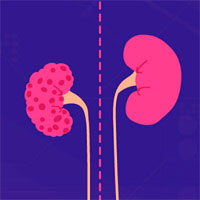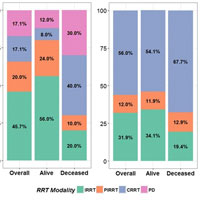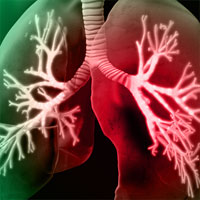Tag: AKI

COVID-19 and AKI
Recent reports from China, Italy, and the US indicate that there is a 25-37% incidence of AKI among critically ill COVID-19 patients (Singh 2020, Hirsch et al. 2020). In a study of 5,449 hospitalized COVID-19 patients, acute... read more

AKI in Critically Ill Patients with COVID-19
Acute kidney injury (AKI) has been reported in up to 25% of critically-ill patients with SARS-CoV-2 infection, especially in those with underlying comorbidities. AKI is associated with high mortality rates in this setting,... read more

Blood Vessel Attack Could Trigger Coronavirus’ Fatal Second Phase
Frank Ruschitzka told his pathologist to be ready before the first COVID-19 patient died. In early March, Ruschitzka, who leads the cardiology department at University Hospital Zürich, noticed that patients with the disease... read more

Remdesivir 5-day vs. 10-day Trial Raises Some Red Flags?
Gilead's first Randomized Controlled Trial on remdesivir was just published, and it's very interesting. This is a trial designed, monitored, and written by Gilead. In some ways, the design of the trial and its missing parts... read more

VExUS Ultrasound Score – Fluid Overload and Venous Congestion Assessment
Proper fluid management while avoiding fluid overload can be one of the most difficult parts of practicing medicine. Unfortunately, many physicians using ultrasound mainly rely on Inferior Vena Cava (IVC) measurements to... read more

Review of the Current Evidence on COVID-19 in Intensive Care
Join Dr. David Lyness as he discusses the current evidence on COVID-19 in Intensive Care. A coronavirus is one of many viruses that cause diseases in mammals and birds. In humans, coronaviruses cause respiratory tract... read more

Association of Initiation of Dialysis with Hospital Length of Stay and Intensity of Care in Older Adults With Kidney Failure
In this cohort study, compared with non-dialysis care, patients who received maintenance dialysis spent more time in the hospital and were more likely to be admitted to intensive care units. This finding suggests trade-offs... read more

Empirical Anti-MRSA Therapy Not Associated with Reduced Mortality for Patients with Pneumonia
This study suggests that empirical anti-MRSA therapy was not associated with reduced mortality for any group of patients hospitalized for pneumonia. These results contribute to a growing body of evidence that questions the... read more

Soluble Urokinase Receptor and AKI
The authors concluded that high suPAR levels were associated with Acute Kidney Injury (AKI) in various clinical and experimental contexts. This cohort study reports that suPAR was associated with subsequent AKI in several... read more

AKI Epidemiology, Risk factors, and Outcomes in Critically Ill Patients 16-25 Years of Age Treated in an Adult ICU
Using the KDIGO criteria for both serum creatinine and urine output to define acute kidney injury (AKI), 39.8% of patients between the ages of 16–25 met AKI criteria during admission to an adult tertiary care center, indicating... read more

Renal Function-Adjusted D-Dimer Levels in Critically Ill Patients With Suspected Thromboembolism
D-Dimer cutoff levels adjusted for renal dysfunction appear feasible and safe assessing thromboembolic disease in critically ill patients. Furthermore, adjusted D-dimer cutoff levels seem reliable in patients with acute kidney... read more

Could the Furosemide Stress Test Clarify Resuscitative Goals?
Imagine that you admit a patient with septic shock. You resuscitate the patient as best you can with inopressors, fluids, and antibiotics. An adequate blood pressure is achieved. A reasonable amount of fluid is administered.... read more

Serum Lactate Level and Mortality in Metformin-associated Lactic Acidosis Requiring RRT
This study suggests that predialysis level of serum lactate level is an important marker of mortality in MALA patients requiring renal replacement therapy (RRT) with a linear dose-response relationship. To better evaluate... read more

The Association of Clinical Variables and the Development of Specified Chronic Conditions in ICU Survivors
Clinical variables, especially the reason for ICU admission, are associated with the development of chronic conditions after ICU discharge. Therefore, these clinical variables should be considered when organizing follow-up... read more




